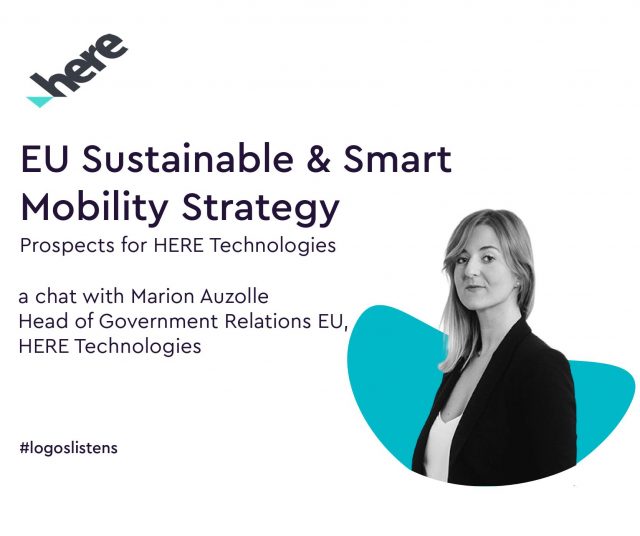
transport & mobility
EU sustainable & smart mobility strategy – next steps for Renault
Change is in the air at Renault. The carmaker is taking the bull of the green transition by the horns and will launch 24 new car models- at least 10 of them being electric- in the next three years.
The French company is beginning to see itself more as an “a tech company working with cars” than an automaker.

We sat down with Marie-France van der Valk, European affairs director at Groupe Renault and Head of the Alliance’s representation office to the EU to learn more about this “Renaulution” and the group’s take on the new EU Sustainable and Smart Mobility Strategy.
What will be the impact of such emission targets for your sector/organisation?
Marie-France van der Valk (M-FvdV): Groupe Renault has been strongly involved in environmental issues in general, and climate change in particular, for years. Groupe Renault is probably one of the first vehicle manufacturers to commit to a decarbonisation roadmap consistent with COP21 ambitions, and recently reinforced its commitment to the EU’s aim of carbon neutrality by 2050.
The post-2020 CO2 Regulation for passenger cars and light commercial vehicles is definitely a strong tool to accompany these decarbonisation efforts in the medium term by forcing changes on the supply side thus enhancing consumer choice in electric vehicles. Current 2030 CO2 targets are already in line with the 2050 objective. Further strengthening those 2030 targets will further stimulate market disruption that can only be foreseen with the relevant ecosystem in place such as infrastructure, incentives and so on.
Groupe Renault is probably one of the first vehicle manufacturers to commit to a decarbonisation roadmap consistent with COP21 ambitions, and recently reinforced its commitment to the EU’s aim of carbon neutrality by 2050.
What are the most promising business opportunities for you in the age of “digitalised transport”? Or areas for improvement?
M-FvdV: Digitalisation and sustainability are two faces of the same coin. Both dynamics need to support each other. With the rise of e-mobility, for which the Alliance has been a pioneer, we developed digital solutions to facilitate its adoption by our customers and create new businesses.
Smart charging is an interesting example. Thanks to exchanges of information between the vehicle and the grid, charging can be triggered when the price is lowest and when the energy produces the least carbon. Digitalisation also supports new mobility services: electric car-sharing, taxi dispatching services or driverless mobility services. These are all opportunities we are working on to provide innovative and sustainable mobility for all and not just a few.
With the rise of e-mobility, for which the Alliance has been a pioneer, we developed digital solutions to facilitate its adoption by our customers and create new businesses.
What are the most important proposals from the Commission on Sustainable and Smart Mobility Strategy for your sector? Does the Strategy correctly address its policy needs?
M-FvdV: We welcome the publication of this strategy by the Commission. It gives a clear signal for OEMs like Groupe Renault to pursue our efforts in developing disruptive technologies toward zero emissions and extensively deploy them. This will require important Research and Development budgets that will cumulate with unprecedented needs to develop many other expected technologies (safety, ADAS, autonomous drive, connectivity, etc.). In that regard, we appreciate the announcement made in the strategy regarding new Research and Innovation partnerships to foster the green and digital transitions.
Another key factor to make CO2-efficient technologies suit customer usage will be charging infrastructures. The revision of the Directive on the Deployment of Alternative Fuels Infrastructure (DAFI) and the EU infrastructure deployment plan as announced in the strategy, shows that the European Commission wants to move up a gear on e-mobility. The fact that the strategy also addresses the electric vehicle ecosystem, with the revision of many energy-related regulations, is also a good indication.
But let’s not forget that affordability of those new technologies is essential. That’s why we believe that the EU shall continue to support purchases and use incentives so that low-emission technology is accessible across Europe. We note that the Commission intends to work on taxation incentives encouraging uptake of low and zero-emission vehicles. This is encouraging, but only a first step.
That’s why we believe that the EU shall continue to support purchases and use incentives so that low-emission technology is accessible across Europe.
Given the COVID-19 context (no in-person meetings, etc.) how will you adapt your engagement with policymakers to make your voice heard?
M-FvdV: COVID-19 has had an impact on the way we work. The automotive sector is still strongly affected by the pandemic and is doing its best to get over this troubled period. When it comes to our engagement strategy, we have learned how to adapt and be agile in this new era of digital-only interactions with institutional stakeholders.
After all, the institutions carry on their activities and we need to continue to be a bridge between our company and them, especially in 2021, which will be a crucial year for the automotive industry.
From a public affairs perspective, the digital way of working also helped to facilitate contacts between our experts and institutional stakeholders. I am sure that some lessons could be drawn from this for all public affairs practitioners.





